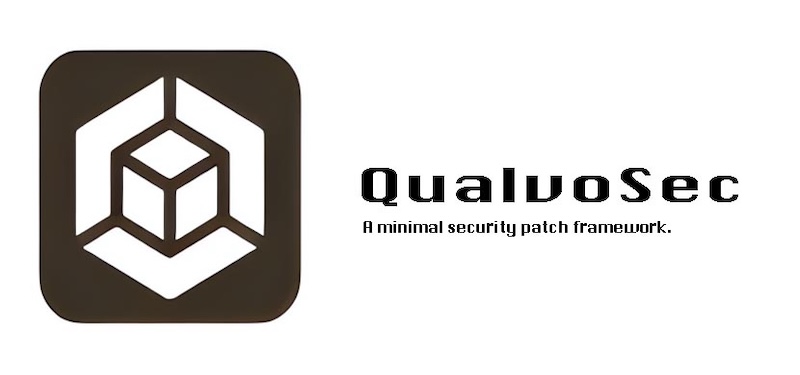HowTo: Install QualvoSec – A Security Patch Management Framework on Debian

Security patch management is a critical aspect of maintaining the security and resilience of an organization’s digital infrastructure. It involves the timely identification, testing, and application of software updates to address vulnerabilities in operating systems, applications, and other software components. This proactive approach is essential to prevent security breaches, data breaches, and unauthorized access, safeguarding sensitive information and ensuring smooth system operation.
The how-to guide focuses on integrating QualvoSec (you can find more information here) into an organization’s infrastructure to streamline and enhance security patch management processes. QualvoSec is a comprehensive security solution designed to automate and simplify the patch management lifecycle. By following the guide, users can achieve benefits such as automated vulnerability assessment, centralized patch deployment, prioritization of critical patches, real-time monitoring and reporting, customizable policies and scheduling, and seamless integration with existing systems.
The integration with QualvoSec provides centralized control over patch deployment, allowing users to manage patches across multiple systems from a single interface. It assists in prioritizing patches based on severity, ensuring that high-risk vulnerabilities are addressed promptly. Real-time monitoring and reporting capabilities offer visibility into patch deployment status, helping users track progress, identify issues, and demonstrate compliance with security standards.
QualvoSec also enables users to define and implement customizable patching policies and schedules, ensuring alignment with organizational requirements and minimal disruption to critical business operations. The guide provides instructions on seamlessly integrating QualvoSec into existing infrastructures, promoting compatibility with diverse software environments and a smooth transition to enhanced security patch management practices.
In summary, the integration of QualvoSec through this guide empowers users to establish a robust and efficient security patch management framework. This proactive approach is crucial in mitigating cybersecurity risks, protecting sensitive data, and maintaining the overall integrity of digital systems.
Server
This tutorial presupposes the existence of a server system equipped with a robust web server secured through SSL/TLS certificates. Prior to proceeding with the following steps, it is imperative that your server is already configured and operational with the necessary security measures in place. This includes the implementation of SSL/TLS certificates to ensure encrypted communication and bolster the overall security of your web server. If you haven’t completed this foundational setup, it is advised to do so before embarking on the procedures outlined in this how-to guide. A secure server environment is fundamental to the success and efficacy of the subsequent steps detailed herein. However, the server part is pretty forward and only requires placing a YAML based config file which holds the metadata for each client server that should be patched.
An example config file can be found on the projects website and looks like:
hypervisor01.gyptazy.ch:
patch: true
reboot: true
weekday: 1
hour: 23
minute: 30
# hypervisor02.gyptazy.ch: # Defines the remote FQDN of the client system.
# patch: true # Defines to patch the system in general.
# reboot: true # Defines to reboot the system after installing the updates.
# weekday: 2 # Weekday where the patches should be installed (Starting with 0 for Monday).
# hour: 3 # Hours where the patches should be installed.
# minute: 15 # Minute where the patches should be installed.This means we can simply go to a root directory of an already configured vhost which should server the manifest and place it there. This can be done by running the following commands:
cd /var/www/html
wget https://raw.githubusercontent.com/gyptazy/QualvoSec/main/src/server/patch.yamlClient
This how-to assumes that a basic Debian or Ubuntu-based system is already in place, and SSH access has been granted.
Afterwards, we simply need to download and to install the .deb package. Just after that, the remote server name gets configured. Therefore, the following commands will be executed:
apt-get install python3-yaml sudo wget
wget https://cdn.gyptazy.ch/files/amd64/debian/qualvosec/qualvosec_1.0.1_amd64.deb - O /tmp/qualvosec_1.0.1_amd64.deb
dpkg -i /tmp/qualvosec_1.0.1_amd64.deb
vi /etc/qualvosec/qualvosec.confAfter placing the remote server, the service can be started and validated:
devbox01.gyptazy.com# systemctl status qualvosec.service
* qualvosec.service - QualvoSec Service
Loaded: loaded (/etc/systemd/system/qualvosec.service; static)
Active: active (running) since Wed 2024-03-06 19:14:03 CET; 25min ago
Main PID: 195713 (python3)
Tasks: 2 (limit: 38426)
Memory: 13.2M
CPU: 735ms
CGroup: /system.slice/qualvosec.service
`-195713 python3 /usr/sbin/qualvosec -c /etc/qualvosec/qualvosec.conf
Mar 06 19:14:03 devbox01 systemd[1]: Started qualvosec.service - QualvoSec Service.Setting up the initial server and client-server integration for a security patch management infrastructure can be a straightforward process, especially when utilizing modern tools and frameworks. The initial server setup involves configuring the central server that will manage and distribute security patches to client systems.
Typically, the process begins with installing and configuring the patch management software on the central server. This software will be responsible for scanning, identifying vulnerabilities, and deploying patches to the connected client systems. The server setup may include defining policies, scheduling patch scans, and establishing communication protocols.
Client-server integration is facilitated by deploying lightweight agents or software on the client systems. These agents communicate with the central server, providing information about the system’s current patch status and receiving patch deployment instructions. This integration ensures a centralized and efficient approach to security patch management across the entire network.
To enhance the ease of setup, configuration management tools like Ansible can be employed. Ansible simplifies the configuration and management of servers by automating repetitive tasks. It allows for the creation of playbooks, which are sets of instructions defining the desired state of the system. Using Ansible, one can automate the deployment of patch management software on the central server and client systems, ensuring consistency and reducing the risk of human error.
In summary, the initial setup of a security patch management infrastructure is generally user-friendly, and client-server integration is streamlined for efficient communication. Config management tools like Ansible further simplify the process, offering automation capabilities that contribute to a more seamless and secure patch management environment.
